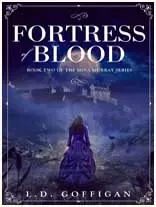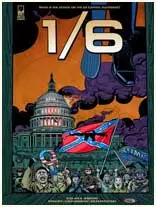What Are 5 Elements of a Mystery Story?

A good mystery story is too difficult to resist. Readers can get spelled into those suspenseful, secretive, and perhaps even unanswered questions worlds at the opening and right down to the curtain falling with all that one happy mystery. A classic whodunit is of the kind, or psychological-thriller or more modern-cum-crime dramas. All mysteries grip us because they are mind and imagination challenges.
What has been said so far sounds interesting, but then what makes a mystery work completely? As such, every page-turner stands with some architectural blocks keeping its reader engaged. In this article, we will dissect the five essential elements of a mystery story in light of their importance-how it all results from professional mystery book writing services in turning one's ideas into physical form.
1. Set in a Compelling Hook:
A great mystery begins with a compelling question. This hook is all in it, the very thing that grabs readers in the first page and doesn't let go at all. It can be anything from discovering a body, a peculiar disappearance, or even a strange piece of mail that shows up in the main character's mailbox.
The hook is what sets the tone and plants the core mystery to be solved. Without it, there could no be any reason for readers to go on flipping pages. Think of it as the spark plug that ignites the whole story.
Professional writers from Mystery Writing Services know how to create hooks that would intrigue readers from the first sentence on, laying the groundwork for a suspenseful journey.
2. Intriguing But Relatable Characters
Characters engage the reader, and mysteries often depend on the real, rich, layered, and slightly unpredictable personas. Typically, at the center of the story, aside from victim or suspect, is the detective-a professional or amateur-trying to put the pieces together.
The detective or sleuth needs to be sharp enough to carry the investigation but flawed enough to feel human. On the other hand, the suspects must leave readers guessing, perhaps because they're hiding something unrelated to the crime or the alibi doesn't quite add up.
Once again, strong character introspection seems to be vital, for protagonists are as much drivers of the plot as the clues themselves, and more often than not, instigate mystery tension.
3. A Highly Strategic Traces of Clues (and Red Herrings)
As there's a puzzle that the audience and the major character put together in a mystery story, clues are the pieces that complete the whole picture. An example of a well-done suspense story is one that contains hints made both overt and subtle throughout the story for readers to put pieces together with the detective.
But that's the rub: the more obvious the clues are, the more predictable the story. That's where the red herrings come in. Those are the distracting clues that lead readers astray because they set false alarms. Tension, assumptions, and an even greater payoff are achieved through misleading the reader to change.
Expert mystery book writing services know how to maintain that delicate balance in employing hints and false lines that trap the reader without leaving the reader feeling cheated.
4. Raising The Stakes and The Suspense
No mystery, at least, suspense free. It should be, with every single revelation, the raised ante. Maybe the sleuth discovers that the killer is closer than they thought, or another crime takes place before the first has been offered resolution.
Suspense builds with pacing, atmosphere, and careful plotting. Short, punchy chapters contribute to a sense of urgency, while descriptive passages create this eerie feel. Readers should feel the steady pressure building-because, in a really wicked mystery, time is hardly ever on your side.
This is the tension that keeps readers glued to the book at 2 a.m., forcing themselves, "just one more chapter.
5. An Effective Resolution
The very center of any mystery is the resolution-not just the "ah-ha" point at which masses marvel with the revelation of truth, but in which the puzzle comes together. A good resolution ties everything up, answers the central question, and delivers a reading payoff worthy of the suspense built up along the way.
Readers might not need an entirely happy ending but would, instead, want closure. The conclusion should feel "inevitable yet surprising," with them thinking, "Of course! How didn't I see that before?"
This is often the hardest part in writing a mystery and where most first-time writers face difficulties. A rushed or predictable ending tends to ruin the impact of the whole story. That's why many go for Mystery Writing Services, where expert writers make sure that the final reveal delivers the punch that every reader craves.
The Importance of These Five Elements
The five elements combined make the backbone of every great mystery: hook, characters, clues, suspense, and resolution. Miss one, and the story seems incomplete. It is these that make for the kind of page-turners readers rave about long after the final chapter.
However, weaving these together requires skill; after all, plotting unexpectedly, creating characters easily believable with a little balance, and providing satisfactory twists takes effort. This is where mystery book-writing services prove their worth. These assist the new entrants into writing along with the seasoned writers looking for some assistance with their work.
limited Time offer
- 00
- 00
- 2





